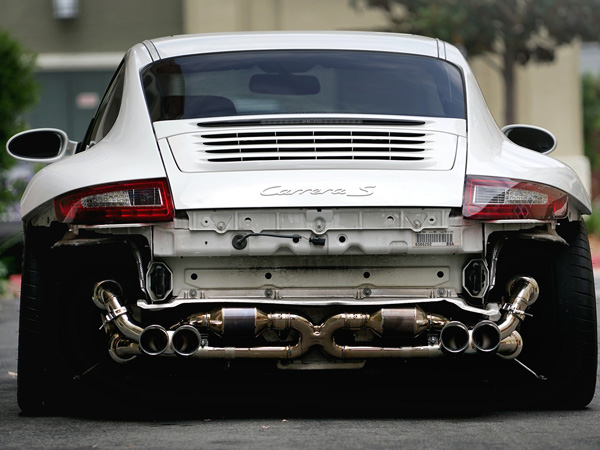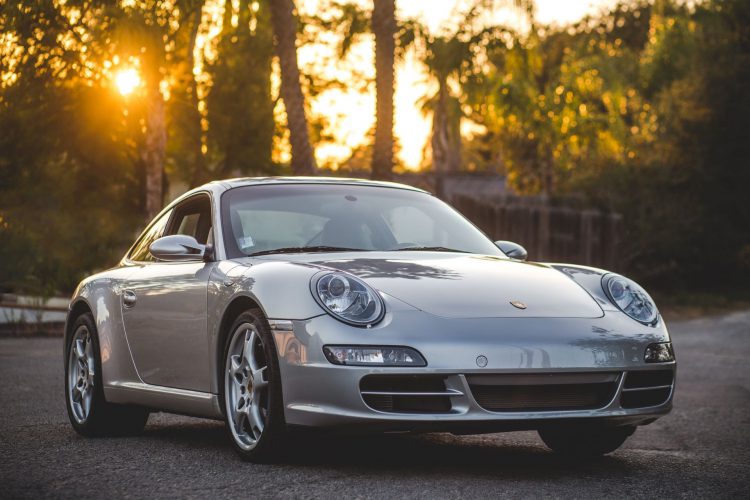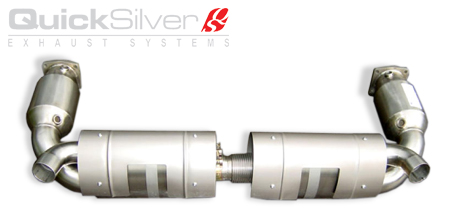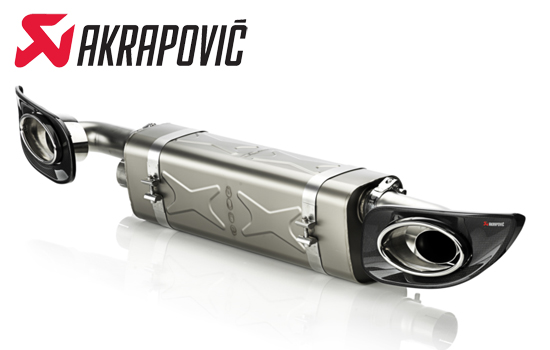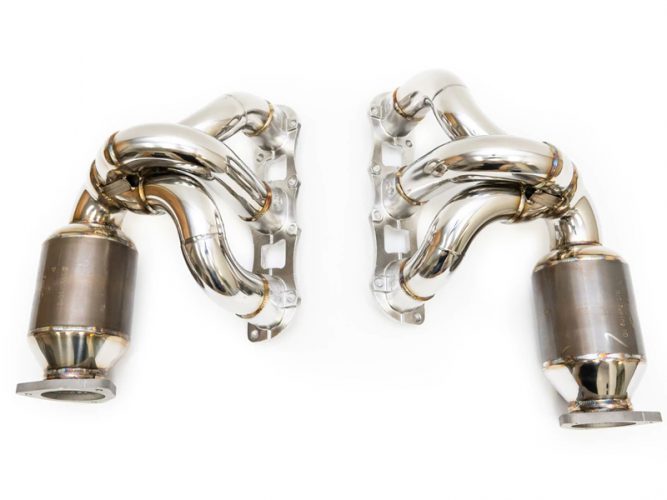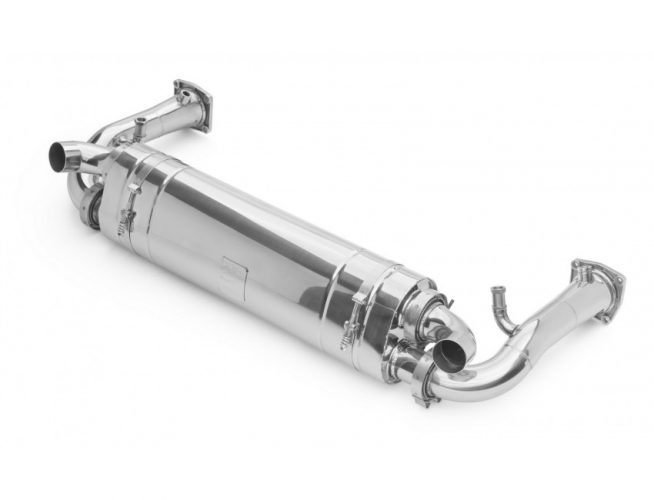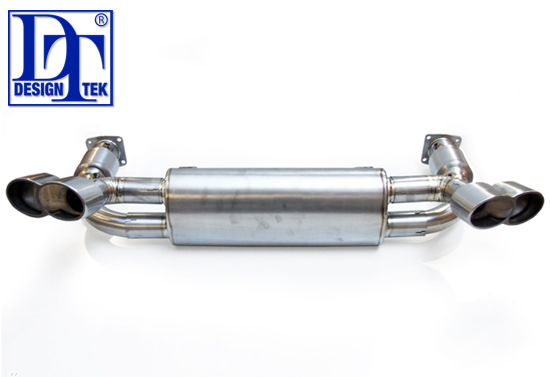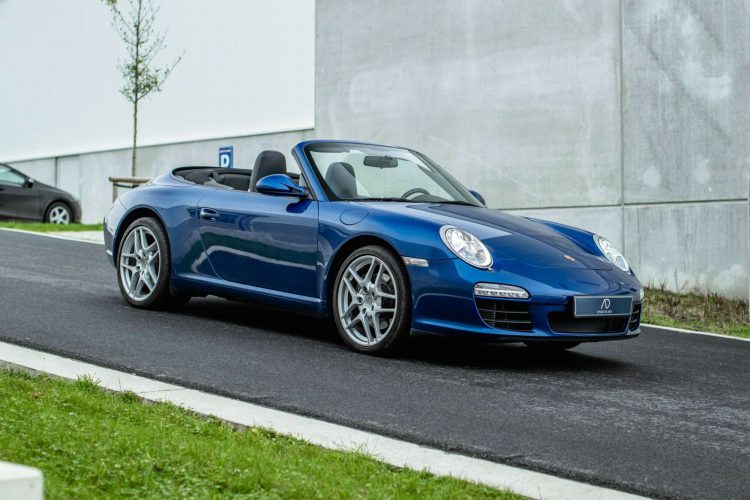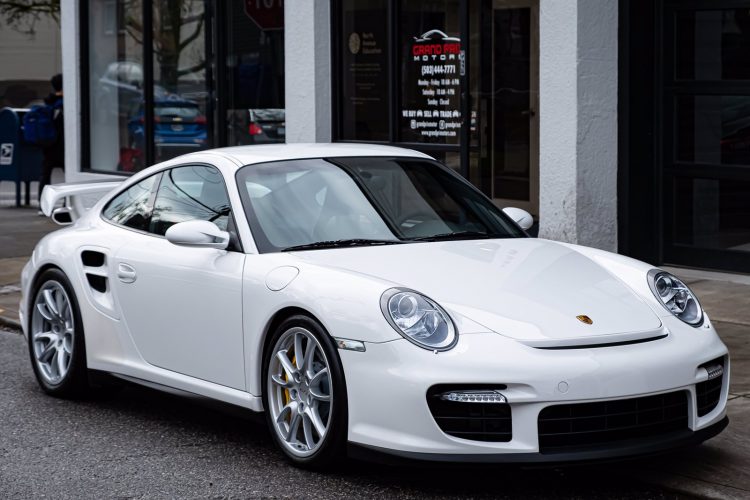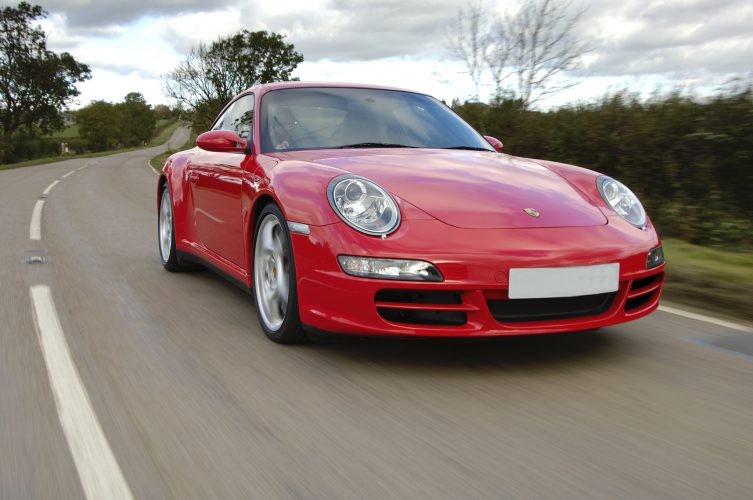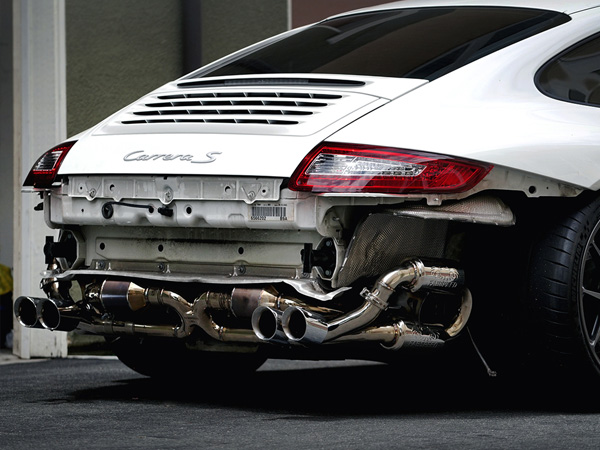
Porsche 997 Exhaust System Upgrades
The Porsche 997, the successor and younger sibling to the Porsche 996, started in the works as early as late 1998, despite its first layman release coming in 2004, with the Model Year 2005.
A favourite within niche Porsche Facebook settlements, and an extremely large contender for the best all-around Porsche model – it truly was the first Porsche to take its toes out of the water and step into modern 2000s society.
Despite the aforementioned, generously termed, mixed success of the Porsche 996, Grant Larson had not given up on the initial 1992 blueprint and remained keen to establish that the new millennium of Porsche 911 models could be a success.
So, in 2001, after compiling mountains of clay models and sketchy diagrams, a final design was signed off. The project was officially on.
Porsche zealots were understandably ecstatic to find several relatively minor, but quickly commended, aesthetical changes had been made to the Porsche 997 in light of the 996’s downfall.
This included the canning of the greatly abhorred “fried-egg lights,” with a return to the vigorously fan-guarded oval shape, and a reworked interior – something that was far more evocative of the insides of the classic 911, as opposed to the 996’s perhaps more flamboyant.
So, does it suffer from the same problems as the Porsche 996?
Fortunately, likely due to the mounds of letters threatening mob action after the 996 release, Porsche technicians did manage to tackle the bulk of the major issues that the forerunner had so regularly endured.
Nevertheless, many of the Porsche 997 models do not come out of the tin as a perfect car, and it can, and does, unfortunately, suffer from debilitating problems; this is spoken to by the affordability of the 997 models today (of course, relative to Porsche 911s).
Despite that, the Porsche 997 is, as suggested before, one of the greatest Porsche 911 models to own while on a budget, as, although it has its flaws, they are relatively easy to fix and remains pretty cost-effective.
You can read more about the common issues the 997 faces here.
The OEM Porsche designed 997 standard exhaust can look vaguely overwhelming to make changes to due to the complicated pattern overarching the bottom of the car.
However, despite its wickedly intricate looks, it’s relatively easy to make adjustments or remove the exhaust altogether.
Interestingly, the Turbo models, like many other Porsche Turbo variations, utilise “Variable Turbine Geometry,” which, in layman terms, is a reference to the change of exhaust angle at different speeds; this is a way of lessening turbo lag but also stopping backpressure at higher paces.
The 997 Turbo exhaust renditions are a superb example of why upgrading the exhaust on your standard 997 can have such a big impact on things such as raw momentum, sound and the general feel of the car on the road.
In a similar fashion to the way the weight was distributed on the GT ranges, but to a lesser extent, the Porsche 997 Carrera and Porsche Carrera S range (also including the 911 Carrera 4 and 4S) featured an upgraded Porsche Sports exhaust and general throttle body
This resulted in a lighter car and subsequently culminated in and better handling than you would experience with the factory standard Porsche 997 exhaust system, due to less pressure on areas such as the rear axle, rear bumper, front bumper and other less prevalent areas like the control arms.
So, without further ado, here are our top picks for 997 Porsche exhausts, and upgrades.
Exhaust system TITAN-SPORTS for Porsche 997 TT QUICKSILVER
The ultimate Sports Exhaust system for the Porsche 997 Turbo.
The QS Inconel TITAN system is almost a third of the weight (18 kilos ~ 38.7lbs) of the standard exhaust. This is a remarkable weight saving, particularly as the catalysts cores & shells (weighing 3.5 kilos) comprise such a large proportion of the total weight.
Importantly this weight comes off the very rear of the car so has a profound benefit to the balance and all aspects of performance.
These systems are as close to an F1 system as it gets. Utilising type 625 Inconel in .7mm and .9mm for tube, silencer casing, muffler internals and thicker Inconel for the bends and flanges.
The heat shields are fabricated from .5mm Titanium.
Though Inconel does not carry any inherent weight advantage over stainless steel, the benefit is that its superior strength allows less (thinner) material to be used.
Inconel’s far superior durability to extreme heat makes it a much better material for motorsport and turbocharged applications – which is why Inconel (and not Titanium) is used for F1, IndyCars, Nascar, LeMans and just about all the top formulae.
Akrapovic Titanium Exhaust System for Porsche 997 Turbo 2010>>
Akrapovic has once again developed the premier exhaust for the Porsche Turbo line. We begin with our very lightweight centre muffler made from our proprietary titanium* alloy.
Replacing the stock centre muffler alone reduces the weight at the back of the car by 4 kg.
The next option is to replace the stock link pipes with the Akrapovic variant made from titanium and incorporate either 100 cpsi or 200 cpsi high-flow catalysts (customer choice). These link pipes, when coupled with our titanium centre muffler, produce a total weight savings of 8 kg compared with the stock system.
Each centre muffler kit also includes beautifully handcrafted, aerospace-grade, carbon fibre bumper inserts with integrated titanium exhaust tailpipes.
These distinctive, yet subtle pieces will set your car apart from the rest of the pack.
As always, our mission is to improve the sound of the car. Turbochargers are known for absorbing quite a bit of the sound volume of an engine.
Through careful design, we were able to produce a system that has the deep and aggressive sound a car of this calibre deserves without being unpleasant or intrusive during normal driving conditions.
The weight savings, appearance, and amazing sound delivered by the Akrapovic system are reason enough to own the system.
However, to increase the power beyond the limit of 500 HP, ECU reprogramming will be required.
The Porsche 997 Akrapovic exhaust system is a perfect basis for increased power when used in conjunction with an ECU reflash as well as other power-enhancing modifications.
Exhaust sport headers
Exhaust Sport Headers.
Performance headers improve exhaust flow and sports car sound; Sport Headers include 200-cell HJS Sport Catalytic Converters.
These headers will give you a significant volume increase and give your 911 a stronger flat 6 wail.
Headers are often the most effective way to improve power on your naturally aspirated car and these sport headers are no exception.
On our dynojet, we saw gains of 8 whp and 14 ft/lbs of tq at 3000 RPM, 13 whp and 16 ft/lbs of tq at 4400RPM, and holds those gains to redline.
FEATURES:
Fits all Porsche 997.2 Carrera vehicles 2009-2011
- Improves power by 13 whp and 16 ft-lbs. of torque at 4500rpm
- Saves 4 lbs from the rear of the vehicle
- Includes multi-layer exhaust manifold gasket
- Includes German-imported 200-cell HJS Sport Catalytic Converters for maximum performance
- Investment-cast high-velocity 3-into-1 merge collectors for maximum performance
- Constructed from high-quality 14-16 gauge C.N.C. mandrel-bent T304L stainless steel for optimum flow and maximum durability
- Direct bolt-on replacement for the restrictive OEM headers
- Backed by the Fabspeed Lifetime Warranty
Sports exhaust silencer with catalytic converter delete Porsche
The component is perfectly interchangeable with the original components, following the instructions in the constructor’s workshop manual
RACETRACK USE ONLY
These components are designed and developed for racetrack use and to maximise the car’s performance. They are not street legal and must be installed by professionals in the sector
CATALYTIC CONVERTER REMOVAL
Complete removal of the catalytic converter minimises exhaust backpressure and delivers optimum results in terms of performance and weight reduction
ECU REMAPPING – FOR PERFORMANCE
On turbo cars, catalytic converter replacement may modify turbocharger operating conditions and cause a deterioration of the torque delivery curve.
To ensure full benefit from the new racing component, the engine’s ECU must be reprogrammed to maximise performance. If the engine warning light comes on, the ECU must always be reprogrammed to eliminate it.
SOUND – TUBI SOUND
Tubi Sound is the standard sound of Tubi Style exhausts, louder and more powerful than the original sound. This sound represents our brand
END TIPS DESIGN – OE
The muffler must be used in conjunction with the original exhaust end tips
END TIPS NUMBER AND POSITION – 1 + 1 AT THE SIDES
The tailpipes are located low down at the sides of the car. There is one tailpipe at each side
MATERIAL – AISI 304 STAINLESS STEEL
A choice stainless steel ideal for aggressive environments where combustion emissions can cause serious chemical corrosion on other types of metal
EXHAUST FINISH – POLISHED
Mirror finishes are highly reflective and created by polishing the stainless steel.
The polishing process enhances appearance and consistency, making cleaning easier. A special rolling procedure is used. It is essential to remove deep scratches as any surface defects will be very noticeable on the finished product.
It improves corrosion resistance. The polishing eradicates crevices where corrosive particles can lodge themselves.
MAIN PIPE DIMENSION 60mm
This is the diameter of the main pipe of the exhaust system
Exhaust Catalytic Converter Pipes
Supersprint Sports Catalyst Bypass tubes perfectly mated to the manifold/header exhaust ports for smooth gas flow. Length and diameter are tuned to engine displacement and power-band characteristics.
Each product is developed and extensively tested using the exclusive MAHA 4×4 LPS 3000 braked to produce the best power results.
CNC machined head flanges, heavy-duty 7 to 12 mm thick steel, and heat distortion resistant.
Stainless steel tubes (for Cat equipped models), or chrome-plated, heavy-duty steel tubes, 1,5 mm wall thickness, mandrel-bent with CNC bending machines.
Joints between tubes are hand-welded and slide-on type connections are machined to perfect tolerances for leak-proof fitting.
An oxygen sensor is retained, where present in the OEM exhaust (no modification is needed to the engine management system).
Exhaust Muffler / Silencer Titanium DesignTek
Exhaust Muffler / Silencer Titanium with Catalytic Converter Single Chamber Design Weight: 9.50Kg
Original Porsche system weight 46Kg, DesignTek Titanium system just 9.50Kg.996TT / X50/ GT2 / 997 Turbo exhaust system with two 200 cell stainless steel cased German Motorsports Race Cats.
FAQ
What’s the difference between the OEM exhaust on a standard 997 and a 997 Turbo model?
As referenced before, Turbo models use something called “Variable Turbine Geometry” (a two-stage resonance intake system supplies this), which allows for a significant reduction in turbo lag but also less backpressure when you’re revving up at higher speeds.
This is not necessarily something that’s needed for the 997 as, as the name suggests, the 997 Turbo is the faster car and requires more control of its speed, however, upgrades similar to the Turbo’s exhaust for the regular 997 are available.
What’s the difference between the OEM exhaust on the 997 GT2, the GT3 and the initial 997 Turbo?
The stand out difference between the two models is the material the exhaust system is crafted from. When the 997 GT2 was released, a full titanium exhaust system replaced the 997 Turbo’s system which resulted in significant weight loss.
The GT3 improved on this again, this time featuring double titanium exhaust pipes.
What model year had the best exhaust system?
The standard 997 had an exhaust refresh when, in the second stage (2009-2013), it featured a redesigned Porsche Sports exhaust system (something that often comes as an optional extra on other models).
For the Turbo, the 2010-2013 rendition of the Turbo and Turbo Cabriolet saw the exhaust system become further improved upon resulting in a speed increase and greener fuel usage; this is due to the Turbo vehicles being focused more upon high performance.
On many of the later 997 GT model ranges, the exhaust tended to have the factory option of an integrated Porsche Sports exhaust system, as stated before.
Can you put an aftermarket turbo into a Porsche 997 Carrera 4′?
The simple answer is yes, although it tends to be harder than many other standard exhaust 997 mods are.
That being said there are plenty of kits and parts available for the job, although this is something we suggest you contact us for before doing – so we can go over the proper details of your desired job.
Final Thoughts
The Porsche 997 in all its beautiful shapes and sizes (well okay, the shape usually stays the same, but the sentiment stays the same), is a Porsche model that benefits a lot from exhaust upgrades.
Of course, these upgrades all have a different impact, so, like many things, at the end of the day, it depends on finding the one that suits, firstly, what you’re looking for and, secondly, your driving style. For example you may want a Porsche 997 Carrera S exhaust style on your standard Porsche 997.
Have any queries about parts for your 997 exhaust system or need some more information about the part that’s right for you? Don’t hesitate to contact us
